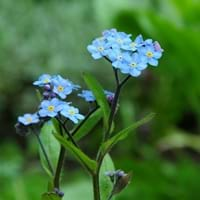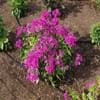Life Span
Annual and Perennial
Perennial
Type
Flowering Plants, Shrubs
Herb
Origin
Eastern Asia
Europe, Asia
Types
Bigleaf hydrangea, Hortensia, Smooth hydrangea, Oakleaf hydrangea, Annabelle
Bigleaf hydrangea, Hortensia, Smooth hydrangea, Oakleaf hydrangea, Annabelle
Habitat
Fields, gardens, meadows, rocky outcrops, waste ground, yards
Forest edges, Hillside, Woods
USDA Hardiness Zone
Not Available
Not Available
Habit
Clump-Forming
Spreading
Flower Color
Blue, White
White, Purple, Pink, Violet, Ivory
Flower Color Modifier
Bicolor
Bicolor
Fruit Color
Not Available
Not Available
Leaf Color in Spring
Green, Gray Green
Green, Gray Green
Leaf Color in Summer
Green, Gray Green
Green, Gray Green
Leaf Color in Fall
Green, Gray Green
Green, Gray Green
Leaf Color in Winter
Light Green
Light Green
Leaf Shape
Lanceolate
Oblovate
Plant Season
Spring, Summer
Spring, Summer
Sunlight
Full Sun, Partial Sun
Full Sun, Partial Sun, Partial shade
Type of Soil
Loam
Clay, Loam
The pH of Soil
Acidic, Neutral
Acidic, Neutral
Soil Drainage
Well drained
Average
Bloom Time
Early Spring, Spring, Late Spring, Early Summer, Summer, Late Summer
Spring, Summer
Tolerances
Not Available
Drought
Where to Plant?
Ground
Container, Ground
How to Plant?
Divison, Seedlings
Seedlings, Stem Planting
Plant Maintenance
Medium
Medium
Watering Requirements
Do Not over Water
Not Available
In Summer
Lots of watering
Average Water
In Spring
Moderate
Moderate
In Winter
Average Water
Average Water
Soil pH
Acidic, Neutral
Acidic, Neutral
Soil Type
Loam
Clay, Loam
Soil Drainage Capacity
Well drained
Average
Sun Exposure
Full Sun, Partial Sun
Full Sun, Partial Sun, Partial shade
Pruning
Remove damaged leaves, Remove dead branches, Remove dead leaves
Remove damaged leaves, Remove dead branches, Remove dead leaves
Fertilizers
All-Purpose Liquid Fertilizer
All-Purpose Liquid Fertilizer
Pests and Diseases
Red blotch
Red blotch
Plant Tolerance
Drought
Drought
Flower Petal Number
Single
Single
Foliage Texture
Medium
Coarse
Foliage Sheen
Matte
Matte
Attracts
Bees, Flies
Bees, Flies
Allergy
Chest tightness, Diarrhea, Dizziness, Nausea, Vomiting
Chest tightness, Diarrhea, Dizziness, Nausea, Vomiting
Aesthetic Uses
Beautification, Cottage Garden, Ground Cover, Showy Purposes
Not Available
Beauty Benefits
Not Available
Not Available
Edible Uses
Yes
Not Available
Environmental Uses
Air purification
Air purification
Medicinal Uses
Fever, Kidney problems, Urinary tract problems
Fever, Kidney problems, Urinary tract problems
Part of Plant Used
Flowers, Root
Flowers, Root
Other Uses
Culinary use, Used as Ornamental plant
Not Available
Used As Indoor Plant
No
Not Available
Used As Outdoor Plant
Yes
Yes
Garden Design
Bedding Plant, Cottage garden, Edible, Hanging Basket, Wildflower
Herb / Vegetable
Botanical Name
Myosotis arvensis
SYMPHYTUM officinale
Common Name
Forget-Me-Not
Common Comfrey
In Hindi
Forget-Me-Not
Hydrangea
In German
Forget-Me-Not
Hortensie
In French
Forget-Me-Not
Hortensia
In Spanish
Arce japonés
Hortensia
In Greek
Forget-Me-Not
υδραγεία
In Portuguese
Forget-Me-Not
Hortênsia
In Polish
Forget-Me-Not
Hortensja
In Latin
Forget-Me-Not
Hibiscus
Phylum
Magnoliophyta
Not Available
Class
Magnoliopsida
Not Available
Order
Lamiales
Not Available
Family
Boraginaceae
Boraginaceae
Genus
Myosotis
Not Available
Clade
Not Available
Not Available
Tribe
Not Available
Not Available
Subfamily
Not Available
Not Available
Number of Species
Not Available
Properties of Field Forget Me Not and Common Comfrey
Wondering what are the properties of Field Forget Me Not and Common Comfrey? We provide you with everything About Field Forget Me Not and Common Comfrey. Field Forget Me Not doesn't have thorns and Common Comfrey doesn't have thorns. Also Field Forget Me Not does not have fragrant flowers. Field Forget Me Not has allergic reactions like Chest tightness, Diarrhea, Dizziness, Nausea and Vomiting and Common Comfrey has allergic reactions like Chest tightness, Diarrhea, Dizziness, Nausea and Vomiting. Compare all the properties and characteristics of these two plants. Find out which of these plant can be used as indoor plant. If you are interested to decorate your house and garden, find out aesthetic uses, compare them and select the plant which will beautify your surrounding. Along with beautification, try comparing medicinal and edible uses of Field Forget Me Not and Common Comfrey and you can choose the plant having best and most benefits.
Season and Care of Field Forget Me Not and Common Comfrey
Season and care of Field Forget Me Not and Common Comfrey is important to know. While considering everything about Field Forget Me Not and Common Comfrey Care, growing season is an essential factor. Field Forget Me Not season is Spring and Summer and Common Comfrey season is Spring and Summer. The type of soil for Field Forget Me Not is Loam and for Common Comfrey is Clay, Loam while the PH of soil for Field Forget Me Not is Acidic, Neutral and for Common Comfrey is Acidic, Neutral.
Field Forget Me Not and Common Comfrey Physical Information
Field Forget Me Not and Common Comfrey physical information is very important for comparison. Field Forget Me Not height is 25.00 cm and width 25.40 cm whereas Common Comfrey height is 60.00 cm and width 60.00 cm. The color specification of Field Forget Me Not and Common Comfrey are as follows:
Field Forget Me Not flower color: Blue and White
Field Forget Me Not leaf color: Green and Gray Green
Common Comfrey flower color: White, Purple, Pink, Violet and Ivory
- Common Comfrey leaf color: Green and Gray Green
Care of Field Forget Me Not and Common Comfrey
Care of Field Forget Me Not and Common Comfrey include pruning, fertilizers, watering etc. Field Forget Me Not pruning is done Remove damaged leaves, Remove dead branches and Remove dead leaves and Common Comfrey pruning is done Remove damaged leaves, Remove dead branches and Remove dead leaves. In summer Field Forget Me Not needs Lots of watering and in winter, it needs Average Water. Whereas, in summer Common Comfrey needs Average Water and in winter, it needs Average Water.





